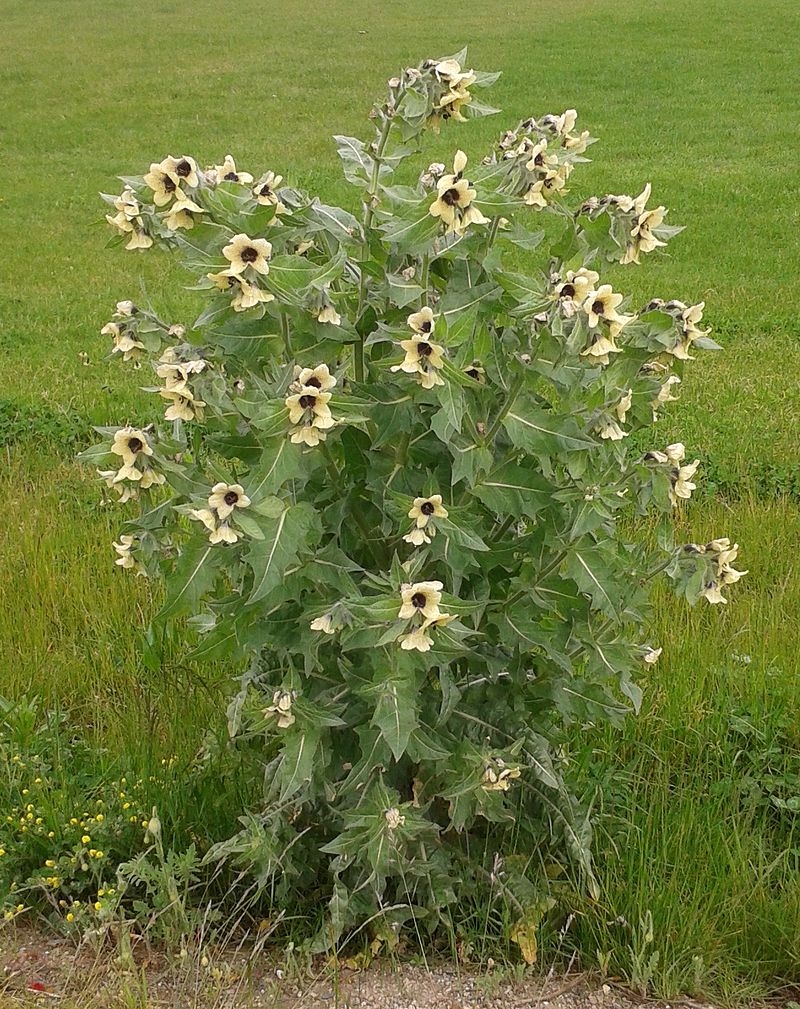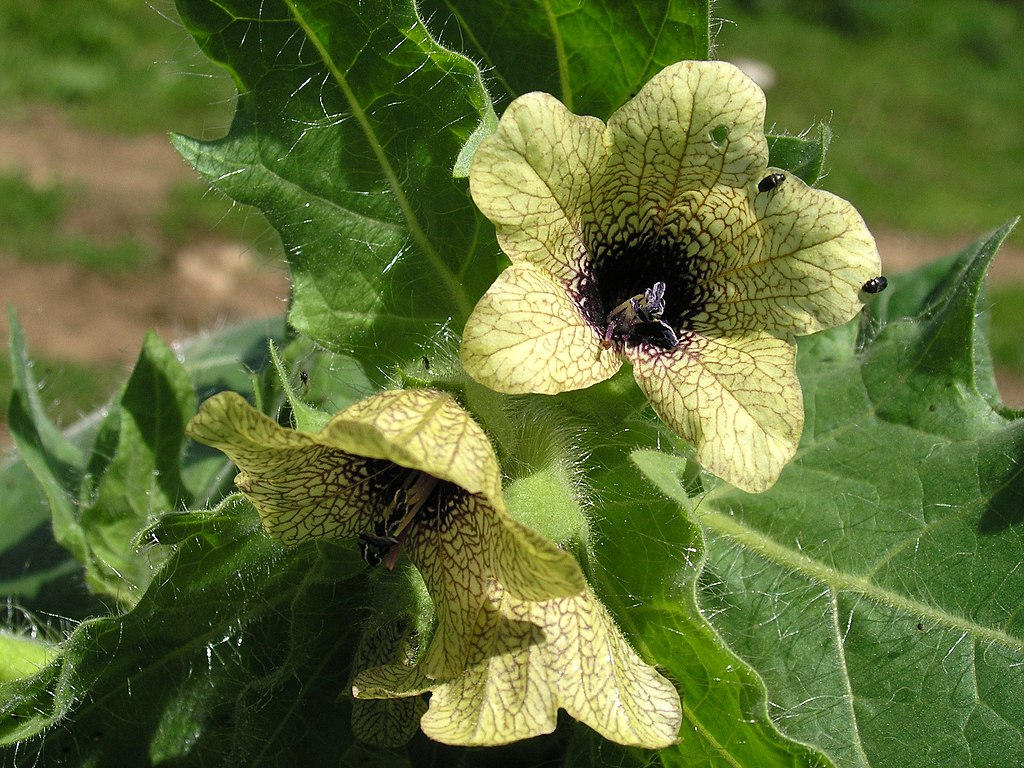
Also known as stinking nightshade, this herbaceous annual or biennial is native to rocky, arid areas of Europe and Asia and is a member of the Solanaceae, nightshade family, that also includes potato, petunia, and Chinese lantern. The plant grows up to 1-3′ tall from a branched tap root and has a woody stem base that is widely branched. The basal leaves are stalked, up to 8″ long, and have coarsely toothed margins while the stem leaves are stalkless and unevenly lobed. The foliage is covered with fine sticky hairs and is foul smelling. In summer, 5-lobed, funnel-shaped flowers appear singly from the stem just above the leaves. Each 1″ wide flower is subtended by leafy bracts and is greenish yellow to whitish, occasionally mauve, with a conspicuous network of dark purplish veins. The pineapple-shaped fruit contains up to 200 black seeds that can remain viable for up to 5 years. Plants reseed themselves and can become weedy. All parts of the plant, particularly the roots and seeds, are poisonous to humans and other animals if ingested. In spite of its toxicity, however, henbane has been used since ancient times as a sedative and pain killer. During the Middle Ages it was associated with witchcraft and more recently it has been used in making beer as well as to treat a variety of ailments from toothache to rheumatism. The genus name, Hyoscyamus, probably comes from the ancient Greek words ῠ̔οσκῠ́ᾰμος (huoskúamos), from ὗς (hûs) meaning pig and κῠ́ᾰμος (kúamos) meaning bean, and refers to the high toxicity of the seeds to swine. The specific epithet, niger, is the Latin word for black, and refers to the seeds. Photo Credit: Mikenorton Wikimedia Commons

Type: Annual or biennial
Bloom: Five-lobed, funnel-shaped flowers colored greenish yellow to whitish, occasionally mauve, with a conspicuous network of dark purplish veins; summer blooming
Size: 1-3′ H x 1-3′ W
Light: Full sun
Soil: Average, dry to medium moist, well-drained, slightly alkaline; tolerates less
Hardiness: Zones 4-8
Care: Contain spread
Pests and Diseases: Belladona leaf miner (Pegomya hyoscyami), Colorado potato beetle (Leptinotarsa decemlineata) root knot nematodes, Ascochyta kashmiriana, and Alternaria.
Propagation: Seed
Companion Plants: Ivy leaved toadflax (Cymbalaria muralis), yellow mignonette (Reseda lutea), knotted clover (Trifolium striatum)
Outstanding Selections: None available
Photo Credit: KB Simoglou Wikimedia Commons